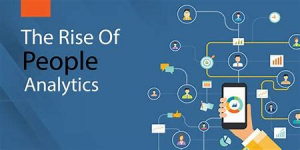 The middle of the year seems like a good time, albeit, not as good as the beginning of the year, but good none the less, to ensure that you are on track to set aside the maximum amount allowed in your 401(k) plan. If there is some catching up to do, contributions spread out over the remaining 6 months are infinitely easier to handle than if you wait until the last quarter of the year, which will necessitate such choices as rent versus 401(k) contributions or tasty meals versus 401(k) contributions, in which case the 401(k) almost never wins. There are many variables when investing and your 401(k) is no different and not immune to any of them. It not always just how much you save that predicts your outcome when you retire, but how you save and what the economic environment looks like.
The middle of the year seems like a good time, albeit, not as good as the beginning of the year, but good none the less, to ensure that you are on track to set aside the maximum amount allowed in your 401(k) plan. If there is some catching up to do, contributions spread out over the remaining 6 months are infinitely easier to handle than if you wait until the last quarter of the year, which will necessitate such choices as rent versus 401(k) contributions or tasty meals versus 401(k) contributions, in which case the 401(k) almost never wins. There are many variables when investing and your 401(k) is no different and not immune to any of them. It not always just how much you save that predicts your outcome when you retire, but how you save and what the economic environment looks like.
Your Contributions
The IRS has generously increased the maximum annual contribution limit in 2019 to $19,000, up from $18,500 in 2018. However, if you are moving toward those golden years and will be 50 years old or older at any time in 2019, you can contribute an additional $6,000 in the form of catch-up contributions. This means you’ll be able to contribute up to $25,000, which includes the catch-up contributions. If your employer makes matching contributions, the amount going into your 401(k) could be much higher.
Employer Matching
Any employer match is a good employer match! Most employers have a 3,4 or 5 year vesting schedule on their match contributions so that employees are encouraged to stay around to actually collect 100% of their match. This employer match is set aside as you make your own personal contributions, but should you leave before you are fully vested in the company match, you will only receive a portion of it. Occasionally you will hear about companies with Safe Harbor plans. In this case, the employer match is vested 100% and immediately. There is no vesting period at all. The reason this is attractive to many companies is that it significantly decreases the discrimination testing that must be done annually on all 401(k) plans and it ensures that you plan will not be found to have to refund dollars contributed back to your highly compensated employees. Many of whom happen to be your senior staff and C-Suite individuals.
Economic Environment
To some extent this is beyond your control. Certainly, the economy’s performance is beyond your grasp to influence, but how you react to the economy and the types of investments you make is very much within your control. Forbes economic advisors are predicting on a 20% chance of a recession this year and a 30% chance of a recession next year. One of the best predictors of a potential slow down is the US bond yield curve which inverted in March of this year for the first time since 2007. An inverted yield-curve occurs when long-term debts have a lower yield as compared with short-term debt. An inverted yield curve is generally considered a recession predictor. It won’t be immediate, but recessions have followed inversions a few months to two years later several times over many decades. When you see this economic phenomenon, money market funds, CD;s and short terms treasury notes start to look more attractive.
Your 401(k) should not be a set and forget savings tool but one that is actively managed, at least quarterly, to ensure that the results are what you are hoping for when you do finally decide it is time to retire.



